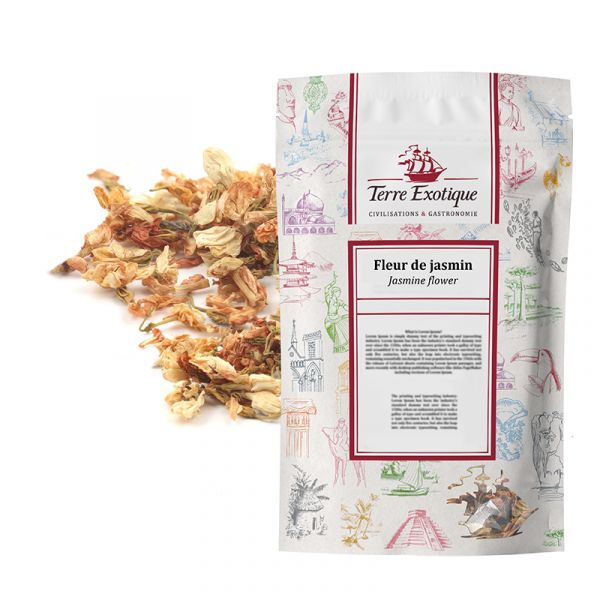



How to Cook with Jasmine Flower?
Add it to crème brûlée for a unique twist or use it in dessert creams, meringue cakes, chocolate mousse, lemon tarts, flans, or even a simple bowl of rice. You can also infuse a few flowers with your iced tea for a delightful treat!
Recipe Ideas for Using Jasmine Flower
- Jasmine Crème Brûlée: Add jasmine flowers to your crème brûlée for a unique floral flavor.
- Chocolate Mousse: Incorporate jasmine flowers into a chocolate mousse for a delicate contrast.
- Lemon Tarts: Top your lemon tarts with jasmine flowers for a fragrant note.
- Jasmine Flan: Infuse jasmine flowers in your flan preparation for a sophisticated dessert.
- Jasmine Iced Tea: Infuse a few jasmine flowers in your iced tea for a refreshing and aromatic drink.
The Aromas of Jasmine Flower
Jasmine flower exudes subtle floral aromas with delicate and fruity notes. Its scent is both enchanting and light, providing a sensation of freshness and sweetness with every taste.
The Botany of Jasmine Flower
Jasminum officinale, or common jasmine, is a large shrub native to Asia. It produces yellow or white flowers known for their exquisite fragrance. Adaptable to different climates, it is primarily cultivated in China today, especially for flavoring green tea.
Jasmine Flower: A Symbol of Beauty
The name "jasmine" comes from the Persian "yâsaman," reflecting its oriental origins. A symbol of beauty, grace, and elegance in oriental culture, jasmine is also a token of love in Tunisia, where the flowers are given as a sign of affection. Mainly cultivated in China nowadays, jasmine continues to enchant with its various uses, from perfumery to gastronomy.
| Price/kg | 135 |
|---|---|
| Allergen | Absence |
| Native country | CHINE, INDE |
| Genus and botanical species | Jasminum sambac |
| Ingredients | jasmine |
| Contenance | 100g |
| TRACES EVENTUELLES D'ALLERGÈNES | céleri, sésame, moutarde, fruits à coques. |
 Français
Français 



